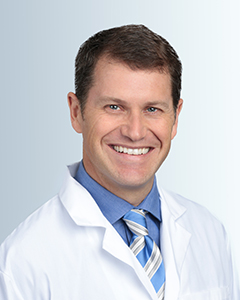What happened when my family got head lice: a pediatrician’s perspective
The nurses in my pediatric practice give parents advice on lice diagnosis and care every day. As a pediatrician, I only get involved when standard treatments fail. Consequently, my knowledge of lice and lice medications is generally focused on the newer prescriptions medications.
Then it happened- our family got lice!
I remember getting lice as a child. My mom was uncertain of the diagnosis, so we marched two houses down to the home of a good friend and third-grade teacher. She carefully combed through my brother’s hair and confirmed he had lice. When it was my turn to be checked, close inspection was not needed. She could see my lice six feet away!
Our parents treated us with an over-the-counter shampoo and washed our sheets and clothes. I don’t remember extensive nit-combing or worrying that the treatment might not work. My mother recounted horror stories of when her sister had lice in the 1950’s. Over-the-counter shampoos were not available so my grandparents shaved her head and burned her clothes.
Unfortunately, the treatment of lice has only become more complicated. In the last 25 years, lice have developed resistance to many common treatments. Over-the-counter shampoos that always worked, still work but only “most of the time.” As lice resistance has increased so have parental concerns about insecticide shampoos. These concerns have lead many parents to partially treat or try untested treatment methods. In response to parental concerns and traditional medication treatment failures, pharmaceutical companies have developed several new treatments. These medications are more expensive, but generally offer increased effectiveness.
What exactly is head lice?
Head lice, medically known as pediculosis capitis, is estimated to infect six to 12 million children each year in the United States. Transmission of lice is almost always by direct head-to-head transmission. Rarely, they can be carried on brushes, combs or towels. Adult lice crawl; they do not jump or fly. Cats and dogs cannot be infected and do not spread lice.
Adult head lice need to feed on human blood several times a day to survive. Females live for three to four weeks and lay an average of 10 eggs each day. The eggs (also known as nits) are laid on the hair shafts very close to the scalp. The scalp provides the heat needed to incubate the eggs. The nits are “glued on” and cannot easily be moved. This characteristic is the easiest way to distinguish them from dandruff or other items trapped in an individual’s hair. Nits are most often laid at the back of the head, especially behind the ears. The eggs usually hatch after eight or nine days.
The majority of lice cases are treated by parents at home with over-counter medications, good nit combing, or home remedies.
What happened when my family of 10 got lice
When we discovered that our children had lice, my wife and I went into “skeeved-out lice panic” mode. We knew that treating a family of 10 would be extremely difficult. A few missed nits could mean starting all over. Outfitted with headlamps, reading glasses and metal nit combs, we searched through our children's hair. We found live bugs in four of them.
There is a current controversy in medicine over whether to treat everyone in the family or treat only those with live, active lice. In our high-density situation, we chose to treat our whole family with an over-the-counter medication.
We followed up with nightly nit combing and bed-sheet washing. We re-treated the family seven days after the initial treatment. The combing took several hours each night. After several days, my wife and I were physically and emotionally exhausted.
Three months later, we found a small infestation in two of our daughters. We are uncertain if these were the product of unfound nits or re-infestation from a friend with known lice. Exhausted and disappointed that our initial super-parent efforts did not work, we chose to re-treat with a newer expensive medication. We treated only those with active lice infestations (two of our daughters and their friend). Since then we have been lice-free.
What I’ve learned
There is no perfect lice medication
Many internet resources will tell you that medicated shampoos are not needed and that nit combing alone or occlusive therapies are good alternatives. The data on nit-combing alone is mixed. While there is some evidence that occlusive treatments like mayonnaise or vaseline may help, it is certainly not convincing. Shaving an individual’s head is still the most effective non-medical alternative.
Over-the-counter medications like RID® (pyrethrins with piperonyl butoxide) and Nix® (permethrin 1%) do work, but have drawbacks. These over-the-counter medications only cost between $10 to $20. However, they require more rigorous nit combing, have the potential for resistance and require re-treatment seven days later.
Prescription medications like Sklice® (ivermectin lotion) and Natroba® (spinosad) also have a role. These medications are one-time treatments, but are expensive, costing $90 to $280. Both of these products have research to support their effectiveness even without nit combing.
Nit combing is essential! All experts recommend combing to remove the nits. There is even some evidence that nit combing alone can be effective. Shampoo medications should kill the adult lice, but no medication kills 100% of the nits. For effective nit combing: wet the hair (slows down the bugs), use “reader glasses,” a bright head lamp and a fine-toothed metal nit comb.
And my final word of advice- Don’t celebrate too early. Too often parents quit combing and monitoring after a few days. Unfortunately, nits are often missed and after eight or nine days hatch and create a second infestation.







